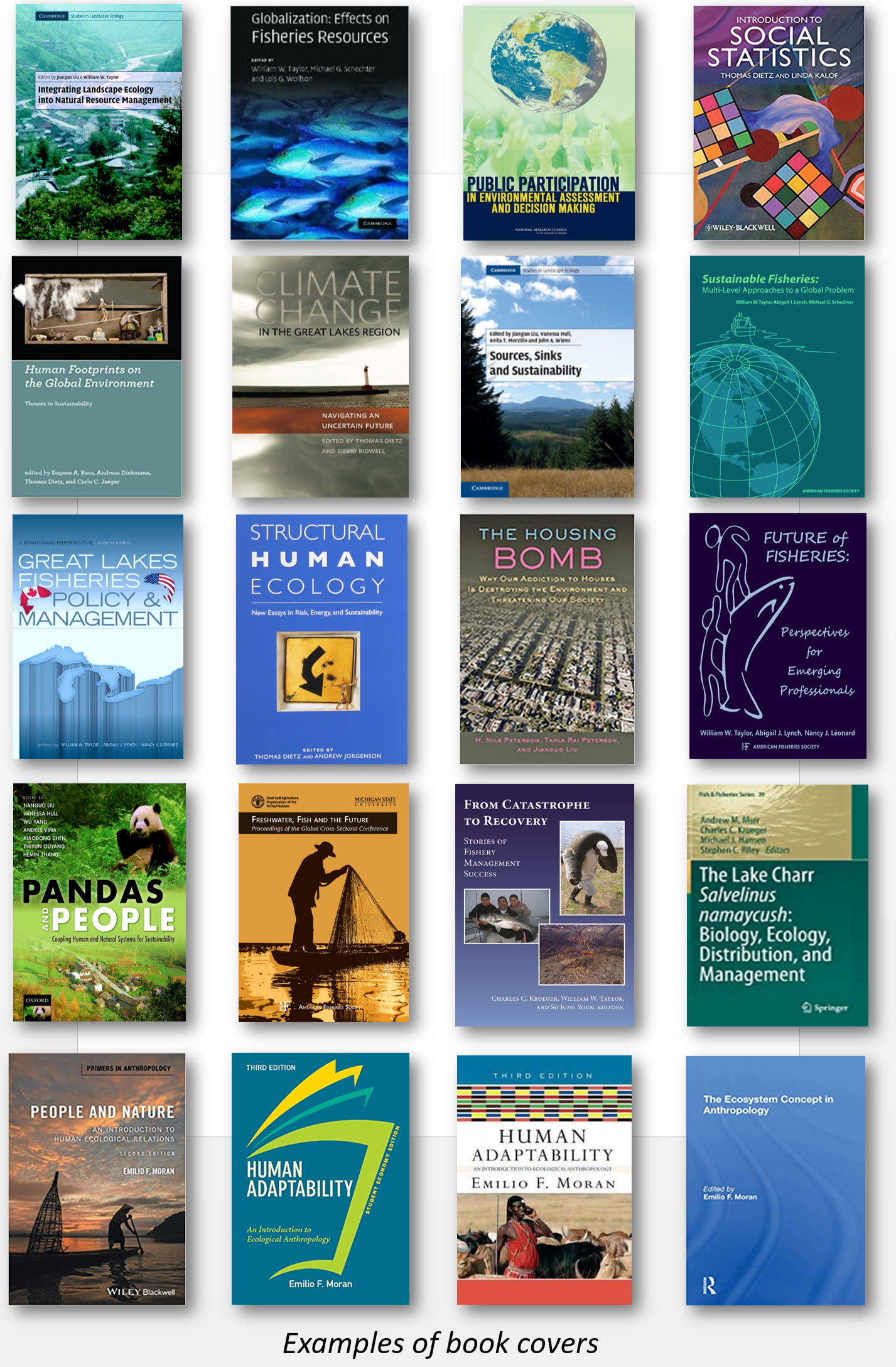Publications
Journal Articles
A list of journal articles published by CSIS members, including 3 cover stories in Nature, 24 appearances in Science, and 17 in PNAS (Proceedings of the National Academy of Sciences of the United States of America).
Books and Book Chapters
Selected books (edited books) and book chapters published by CSIS members.
Publications
-
Predicting the geographical distribution of two invasive termite species from occurrence data
Published on October 19, 2017
Predicting the potential habitat of species under both current and future climate change scenarios is crucial for monitoring invasive species and understanding a species' response to different environmental conditions. -
ECOLOGY AND SOCIETY -- Telecoupling Toolbox: spatially explicit tools for studying telecoupled human and natural systems
Published on October 19, 2017
We introduce the Telecoupling Toolbox, the first set of tools developed to map and identify the five major interrelated components of the telecoupling framework: systems, flows, agents, causes, and effects. -
Spatio-temporal reconstruction of missing forest microclimate measurements
Published on October 19, 2017
Scientists and land managers are increasingly monitoring forest microclimate environments to better understand ecosystem processes, such as carbon sequestration and the population dynamics of species. -
Areal delineation of home regions from contribution and editing patterns in OpenStreetMap
Published on October 19, 2017
This research explores the editing history of nodes and ways for 13 highly active OSM members within a two-tiered clustering process to delineate an individual mapper’s home region from remotely mapped areas. -
Identifying spatial pattern of NDVI series dynamics using recurrence quantification analysis
Published on October 18, 2017
In this paper recurrence quantification analysis was used to measure the determinism and predictability of Normalized Difference Vegetation Index series and its spatial patterns. -
Exploring spatially variable relationships between NDVI and climatic factors in a transition zone using geographically weighted regression
Published on October 18, 2017
Taking a look at "Theoretical and Applied Climatology". -
Identifying spatial patterns and dynamics of climate change using recurrence quantification analysis: a case study of Qinghai-Tibet plateau
Published on October 18, 2017
In this study, recurrence quantification analysis was used to analyze the annual temperature series of 17 stations in different climate zones of the QTP, based on station observation data of daily temperature from 1961 to 2008. -
Nonlinear features and complexity patterns of vegetation dynamics in the transition zone of North China
Published on October 18, 2017
In this study, we adopted ROA to investigate the spatial patterns of determinism of the vegetation dynamics ecological-geographical transition zones in North China, especially the differences between transition zone and the surrounding areas. -
The distance decay of similarity in climate variation and vegetation dynamics
Published on October 18, 2017
This study aimed to illustrate the strength of the distance-decay relationship in variation of climate and vegetation, and to quantify the relationship. -
Investigating spatial variation in the relationships between NDVI and environmental factors at multi-scales: a case study of Guizhou Karst Plateau, China
Published on October 18, 2017
This article investigated the spatially non-stationary relationships between NDVI and environmental factors using geographically weighted regression (GWR) at multi-scales. -
Identifying spatial patterns of synchronization between NDVI and climatic determinants using joint recurrence plots
Published on October 18, 2017
Ten-day series of the NDVI derived from multi-temporal satellite imagery (1998–2008) was employed as a surrogate for the surface vegetation cover to investigate synchronization of the climatic determinants and its spatial patterns in China. -
Investigating spatial non-stationary and scale-dependent relationships between urban surface temperature and environmental factors using geographically weighted regression
Published on October 18, 2017
In this paper, using Shenzhen City in China as a case study, a geographically weighted regression model is used to explore the scale-dependent and spatial non-stationary relationships between urban land surface temperature and environmental determinants. -
Local ecological knowledge and incremental adaptation to changing flood patterns in the Amazon delta
Published on October 5, 2017
We discuss a case study on ILK as a resource used by expert farmer-fishers (locally known as Caboclos) to cope with the increasing threats on their livelihoods and environments generated by changing flood patterns in the Amazon delta region. -
Impacts of Cash Transfer Programs on Rural Livelihoods: a Case Study in the Brazilian Amazon Estuary
Published on October 4, 2017
We conducted a large household survey in a region of the Amazon estuary in Brazil to investigate the dependence of small farming households on government cash transfers and to identify the main factors that lead to better livelihood outcomes. -
Impacts of Cash Transfer Programs on Rural Livelihoods: a Case Study in the Brazilian Amazon Estuary
Published on October 4, 2017
We conducted a large household survey in a region of the Amazon estuary in Brazil to investigate the dependence of small farming households on government cash transfers and to identify the main factors that lead to better livelihood outcomes. -
Accounting for ecosystem services in compensating for the costs of effective conservation in protected areas
Published on October 3, 2017
Protected areas are a major approach for conserving ecosystem services globally. Effective conservation in protected areas must integrate human livelihoods into the design and management of conservation. -
Reassessing the conservation status of the giant panda using remote sensing
Published on September 26, 2017
The conservation status of the iconic giant panda is a barometer of global conservation efforts. -
Mapping the hotspots and coldspots of ecosystem services in conservation priority setting
Published on September 14, 2017
Spatial-explicitly mapping of the hotspots and coldspots is a vital link in the priority setting for ecosystem services (ES) conservation -
Seeding an arbitrary convention in capuchin monkeys: The effect of social context
Published on September 14, 2017
We conducted an open diffusion experiment to determine whether capuchins would learn an arbitrary convention from a knowledgeable demonstrator. -
Spatially explicit quantification of the interactions among ecosystem services
Published on September 14, 2017
We propose a framework to map ES in continuous time-series, based on which we further quantify interactions among multiple ES.





 Print
Print Email
Email